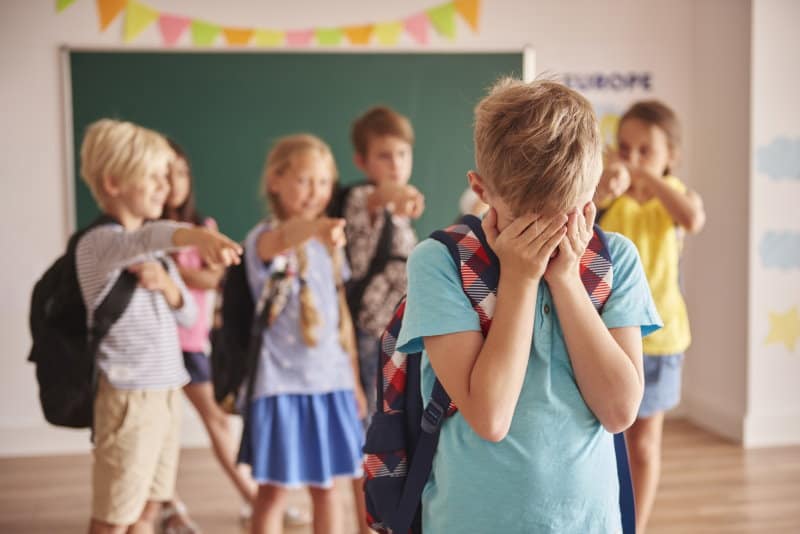
Why Do Students Bully Others?
Understanding the motivations behind bullying is crucial for effective prevention and intervention. While there’s no single answer to why students bully others, a complex interplay of factors contributes to this harmful behavior. These root causes range from individual characteristics and social dynamics to broader societal influences. This article delves into these key contributing factors, offering a nuanced perspective on the origins of bullying and highlighting the importance of a multi-pronged approach to address this pervasive issue.
One significant factor contributing to bullying behavior is the individual characteristics of the bully. Some students may possess traits like impulsivity, aggression, and a lack of empathy. These traits might stem from various sources, including genetic predispositions, neurological differences, or early childhood experiences. Children who have witnessed violence or experienced abuse at home may be more likely to exhibit aggressive behaviors, including bullying. This learned behavior, often a coping mechanism for their own trauma, can manifest as aggression towards others. Furthermore, some bullies may lack social skills or struggle with emotional regulation, leading them to resort to bullying as a way to assert dominance or control. They might have difficulty understanding and responding appropriately to social cues, resulting in misunderstandings and conflict that escalate into bullying.
Social dynamics within a school environment also play a crucial role in fostering bullying behaviors. Peer pressure can significantly influence a student’s actions. A student might engage in bullying to gain acceptance from a peer group or to avoid becoming a target themselves. This creates a cycle where bullying behaviors are reinforced and perpetuated within social circles. The presence of bystanders who do not intervene also contributes to the problem. The lack of intervention from peers can embolden bullies and further normalize the behavior. A culture of silence and inaction can inadvertently encourage bullying by creating an environment where it is tolerated, if not implicitly condoned. The absence of clear consequences for bullying can also contribute to this normalization. If students believe that there are no repercussions for their actions, they are more likely to engage in bullying behavior.
Family dynamics also significantly impact a student’s propensity to bully. A lack of parental supervision or inconsistent discipline can lead to a sense of entitlement and disregard for others’ feelings. Children from homes marked by conflict, neglect, or abuse may learn to use aggression as a means of coping with their own negative experiences. These learned behaviors can translate into bullying behaviors at school. Conversely, supportive and loving families who instill empathy and respect can help to mitigate the risk of a child becoming a bully. A positive home environment that emphasizes conflict resolution and emotional regulation equips children with the necessary skills to navigate social interactions constructively.
Beyond the individual and immediate social context, broader societal influences also contribute to the prevalence of bullying. Exposure to violence in the media, whether through television, video games, or social media, can normalize aggressive behavior and desensitize individuals to its harmful effects. The glorification of violence and aggression in popular culture can create a social environment where bullying is perceived as acceptable or even desirable. Furthermore, societal attitudes and norms surrounding masculinity and femininity can influence bullying behaviors. Traditional notions of masculinity, for example, sometimes emphasize aggression and dominance, potentially creating an environment where bullying is seen as a way to assert oneself and conform to societal expectations. Likewise, societal pressures surrounding appearance and social status can contribute to bullying, particularly among girls and young women. The constant pressure to conform to narrow beauty standards or achieve popularity can lead to competition and exclusionary behavior, which can manifest as bullying.
Addressing the complex issue of bullying requires a comprehensive and multifaceted approach. This approach necessitates a combination of strategies that focus on individual intervention, social support, and broader societal change. Schools need to implement anti-bullying programs that teach empathy, conflict resolution skills, and the importance of bystander intervention. These programs need to focus on fostering a culture of respect and inclusivity, creating a school environment where students feel safe and supported. Parents have a crucial role in fostering healthy emotional development in their children and providing consistent support and guidance. Community involvement is also vital, requiring collaborative efforts between schools, families, and local organizations to promote a shared understanding of bullying prevention and intervention. Ultimately, understanding the complex root causes of bullying is the first step towards creating more positive and supportive environments for students, allowing them to thrive academically and emotionally.